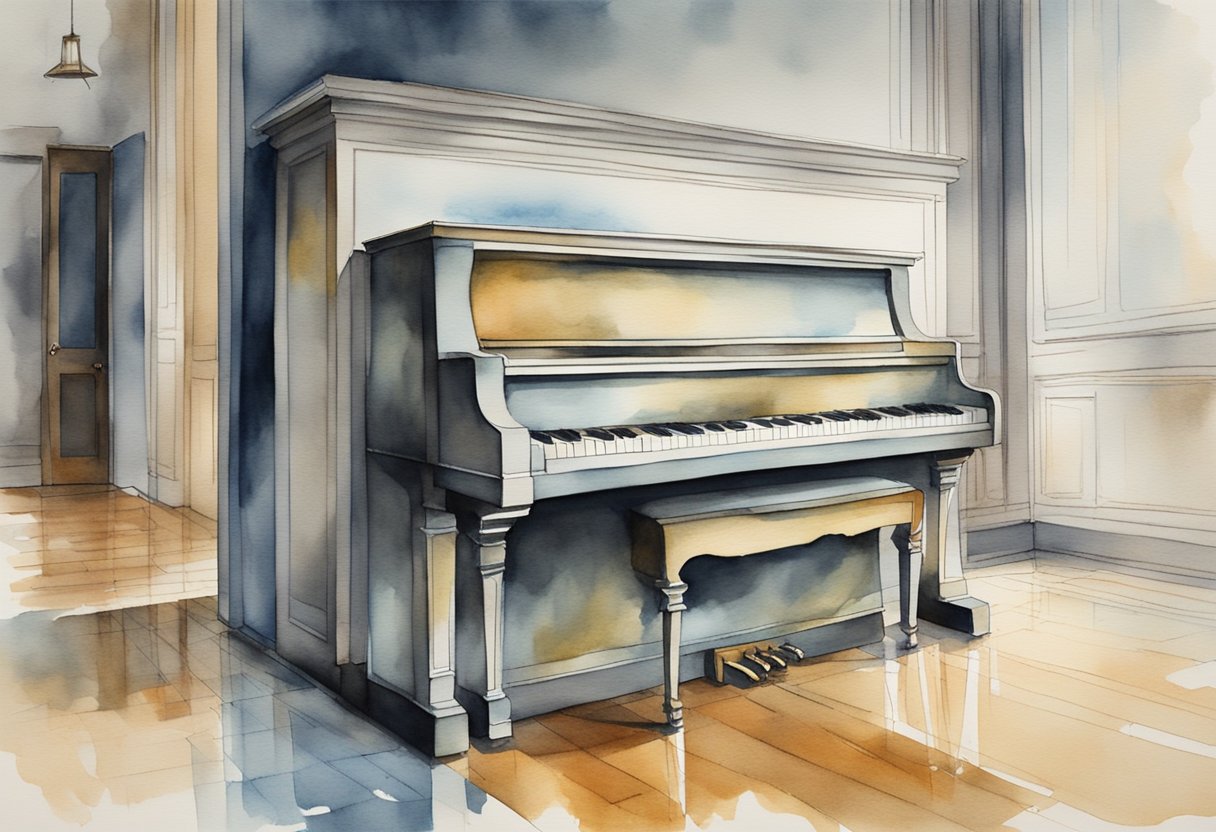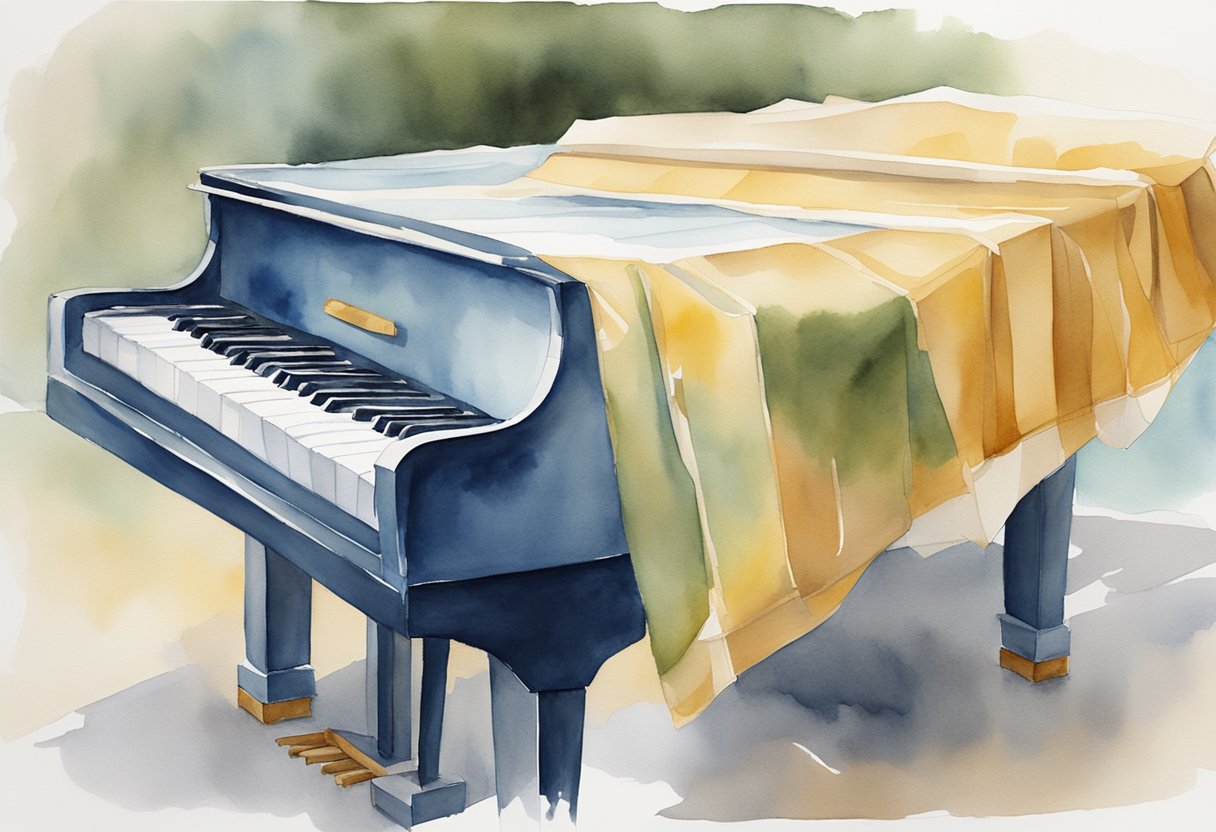As an Amazon Associate I earn from qualifying purchases.
Moving a piano, whether it’s a stately grand or a cozy upright, can introduce the risk of potential damage, much to the dismay of musicians and music aficionados alike. I’ve witnessed the myriad ways a piano can suffer harm during a move.
Minor jostling can disrupt the intricate balance of hammers and strings, and in worst cases, cause structural damage that affects its harmonious sound.
Want to Learn Piano?Click Here

In my experience, the common issue isn’t whether moving a piano can cause damage; it’s about understanding how to mitigate that risk effectively.
For instance, when a grand piano’s legs are properly removed. It doesn’t just prevent breakage—it also enables safer navigation through doorways. Similarly, securing the keyboard lid is a non-negotiable step, as any movement can damage the fragile keys.
An unlocked lid can swing open, resulting in costly mishaps that no enthusiast would want to encounter.
Therefore, it’s crucial to take every precaution to ensure your piano arrives at its new home in the same condition it left its old one. And if you’re ever uncertain about the steps to safeguard your musical companion, consulting a professional who specializes in this field is a wise decision.
Preparing Your Piano for the Move
Before relocating your piano, it’s essential to prepare meticulously to ensure its safety and integrity. Let’s tap into the necessary steps, just as if tuning a new piece for performance – both require attention and care.

Assessing the Challenge
You must first understand the type of piano you have – whether it’s a grand, baby grand, or upright. Hefty and unwieldy, pianos require a precise approach. Measure doorways, staircases, and the piano itself to plot a clear path.
Protecting the Instrument
The finish of your piano is as delicate as its strings, so protect it using padding and wrapping. Layer moving blankets or dedicated piano padding to safeguard against bumps. Secure the safety of the instrument’s legs and pedals with care, as with bungee cords or sturdy packing tape.
Gathering the Right Supplies
Acquiring the right equipment is non-negotiable for a successful move. For efficiency, here’s what you’ll need:
- Piano dolly: Spare your back; a specialized dolly makes transport smoother.
- Lifting straps: These give you a better grip and distribute the piano’s weight evenly.
- Work gloves: These protect your hands and improve your grip.
You might consider disassembling some parts. For instance, securely remove the lyre of a grand piano much like detaching the music desk before practice. Assemble a toolkit just as you would your music sheets – with preparation and thoroughness.
The Moving Process
When it comes to moving an instrument as sensitive and heavy as a piano, the details in the execution of each step are critical. From choosing who will handle the move to ensuring the piano arrives in tune and without damage, every action matters.
Choosing the Right Movers
You wouldn’t entrust a priceless painting to someone without the proper credentials; similarly, hiring professional movers with experience specifically in pianos is key.
Whether you own a delicate baby grand or a substantial upright piano, moving these instruments requires specialized skills to navigate tight spaces such as doorways and hallways safely.
It’s not just about strength; it’s knowing the techniques to lift, tilt, and maneuver without causing undue strain on the piano’s mechanics or risking injuries.
Securing and Transporting
Once you’ve chosen your movers, the next step is making sure your piano is protected throughout transit. Heavy-duty straps and moving blankets are essential — they prevent scratches and other damage.
The piano should be wrapped securely and placed on a dolly or piano board before moving it onto the truck. An upright piano should always remain in an upright position to protect its internal components.
Be it an upright or a grand piano, if your route includes stairs or windows, wood planks can help distribute the weight evenly.
Securing the Piano in the Truck:
- Moving Blankets: Essential for cushioning and preventing damage.
- Tie Down Straps: For securing the piano during transport.
- Heavy-Duty Straps: To aid safe lifting without causing injuries.
For grand pianos, ensuring that the lid is locked and parts such as the lyre and music rack are safely removed and transported separately is indispensable. If you decide to move a piano in a pickup truck, know that even the vibrations from smaller bumps can affect the tuning.
Post-Move Care
Once in your new home, the piano should be inspected for any external and internal damage. It’s common for a piano to require retuning after a move due to the shifts in tension among the strings. Be sure to let the piano settle for a few weeks in its new environment before seeking the services of a tuner.
Ensure that the area where you place the piano is away from vents and out of direct sunlight, as these conditions can also affect the tuning and finish of the piano over time.
Hello & thanks for stopping by! I’m a professional concert pianist and piano instructor. In the United States, I’ve given successful performances in several places including New York, Florida, Connecticut, & New Jersey, I have also performed internationally in Italy and made my Carnegie Hall debut in 2014. I enjoy blogging about the piano, the art of performance, general music, current events and the latest in music production.
